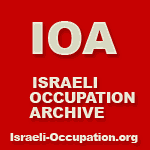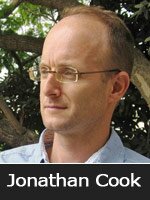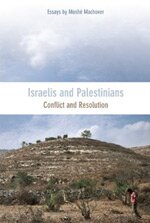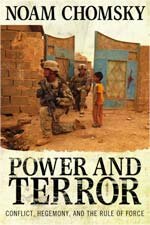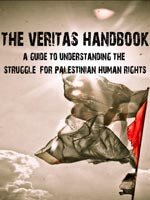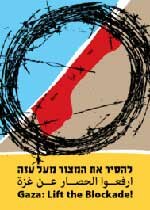By Amira Hass, Haaretz – 12 March 2009
www.haaretz.com/hasen/spages/1070730.html

Amira Hass
GAZA – During the past 10 days, the Defense Ministry’s claims and insurance division received a registered letter including an official document describing the damages suffered during Operation Cast Lead by Sabbah Abu Halima. Also in the envelope were 12 similar notices, detailing the damage sustained by members of her family (seven of whom were killed and six wounded). According to the short letter accompanying the forms, they were sent as per “the Civil Damages Regulations (State Responsibility) 2003.” “Please fax us confirmation of receipt,” added (in Hebrew) the signatory: Iyad al-Alami, attorney, Palestinian Center for Human Rights (PCHR) in Gaza. The center has to date sent about 500 such registered letters with forms enclosed to the claims and insurance unit in the last month, detailing the damage done during the Israel Defense Forces offensive from December 27, 2008 until January 10, 2009. Another 300 letters are expected to be sent in the coming weeks, referring to the period of January 11-18.
The letters are just the first step in a process being undertaken by the PCHR and various Palestinian, Israeli and foreign organizations, lawyers and civil rights advocates. Their aim: to put an end to what they see as the impunity Israel enjoys after it attacks the Palestinians.
The law demands that a detailed notification of damages be sent to the Defense Ministry within 60 days of the reported event. Accordingly, since January 18, nearly all the staff of the PCHR have been involved in the process of preparing the notifications. Twenty-five field workers collected testimonies and took photographs in all the areas that were affected. People who wanted to have reports submitted went to the center’s offices, where each of the staff’s 10 young lawyers heard 10-20 complainants a day, took detailed affidavits and received power-of-attorney. The affidavits were then entered into a computer and a full report of the event was compiled (involving cross-checking of testimonies, field visits, drawing of maps, etc.). Later, an abstract was prepared and the “notification forms” were filled out with the aid of senior lawyers.
“Only in the next stage will we submit a complaint to the military advocate general,” Alami explains. “We question the people involved closely, in order to separate the exaggerations and the nonsense from the truth.”
The PCHR is supposed to receive a reply from the Defense Ministry, stating that “we received the notification and will open a property file or a body file numbered so-and-so and will inform you when we have finished handling the case,” in Alami’s words. “As for the complaint itself, sometimes we get a reply that the matter is ‘under consideration.'”
In some instances the center has to send a reminder about a case; in that event, it usually receives a reply that the matter is still under consideration. “Rarely do we get a reply stating that the military advocate general is requesting the Military Police investigations unit to look into the matter.”
The Defense Ministry form that the lawyers fill out contain standard questions such as: “Who caused the damage (description of the human element who caused the damage as fully as possible – IDF/Border Police soldier, serial number)?” In Abu Halima’s case, the most likely answer is a soldier in the Artillery Corps and a sniper from a unit unknown to the complainants. Another question: “What was the cause of the damage (rubber bullet / shrapnel / shell / explosion / missile strike / other; in case of damage by a military vehicle, details of the vehicle and the driver should be noted as fully as possible)?”
For the Abu Halima family, the answer to this was: “other” – a white-phosphorus bomb and live bullets.
Few responses
According to Alami, at least 80 percent of the 3,000 files the center sent during the second intifada received the reply that the damage was caused by belligerent activity, and therefore the state is not responsible. Experience has taught him that replies from the Military Police arrive mainly in cases of complaints about theft and looting. In such cases, the Military Police can ask the PCHR to report the names of the soldiers who “were present” in the vicinity, or to describe what the soldiers looked like, “including color of uniform, color of shoes, ranks.”
This time, too, Alami believes, any IDF investigation will be mainly, if not solely, focused on complaints about theft during Operation Cast Lead (to date, the center has documented about 20 such cases). Past experience has shown that the courts in Israel, headed by the High Court of Justice, are not equipped to carry out a full inquiry into what the IDF does, he says. Thus, foreign courts are the next instance to be approached.
The PCHR conducted a similarly meticulous investigation before its lawyers filed a complaint to a Spanish court on its behalf, against seven senior Israeli figures – including former chief of staff Dan Halutz, former defense minister Benjamin Ben-Eliezer and former Shin Bet security chief Avi Dichter – on suspicion of perpetrating war crimes during the assassination of Salah Shehadeh on July 22, 2002. The bomb dropped on Shehadeh’s house also killed 14 civilians.
But why go through this protracted process and engage in correspondence with the Israeli authorities? Says Alami: “This is a process of collecting facts and submitting them, of documentation and evidence.”
In other words, you are providing material for history?
“Not only. If Israeli society and its judicial system are incapable of assuming responsibility, then let the world do it, if it has any moral responsibility. On the basis of the evidence we have available, we will continue to demand compensation from Israel. Israel says innocent people are killed, but shuns responsibility. But if you admit that there are innocent people, you have to pay. Or maybe peace will come and the compensation will be part of the agreement.”
If anyone decides to write about Operation Cast Lead in the future, he or she will find at the PCHR hundreds of files of material that has not been used in IDF investigations . The story of the Abu Halima family appears in dozens of foreign media reports. What Sabbah Abu Halima told those journalists and Haaretz appears in the center’s documents, purged of any journalistic embellishments.
Date: Sunday, January 4, 2009
Place: Sayafa, Attatra neighborhood, northwest of Beit Lahiya
Israeli ground forces advance, in full control of the area
Firing: Shells, shooting, phosphorus bombs
Time: About 3 P.M.
Event 1: Sa’adallah, 47, his wife Sabbah, 46, and their children are at home. A phosphorus bomb penetrates the house. The father and four children are killed instantly. The mother, a daughter and a daughter-in-law suffer burns of various degrees. Neighbors arrive with a tractor and a truck to rescue them.
Event 2: The tractor carries the body of the infant Shahed, 2, the wounded and their escorts, and arrives at a point opposite the Omar Bin al-Khattab School. A few hundred meters south of the house, soldiers are stationed in the homes of the Ghanem family, next to the school. They demand that the driver stop and that the passengers, other than the wounded, step out. The passengers comply. The soldiers shoot at them. Two are killed (Mahmoud Abu Halima, 17, and Matar Abu Halima, 18), two are wounded (Nabila Abu Halima, 39, Amr Abu Halima, 18). The living (and the wounded) flee westward. The bodies of the killed (and Shahed) lie there until January 9. Only then does the IDF allow the Red Cross to collect them.
(Photo of the baby girl, taken with the mobile phone of one of the brothers, is attached; the white phosphorus ate away her lower limbs to the bone and the whole body is burned.)
Event 3: The truck carries four bodies: Sa’adallah and his three sons (Abd Al Rahim, 14; Zeyd, 11; and Hamza, 8] and their escorts. In Al-Attatra Square soldiers in the area open intensive fire at the truck. The escorts flee immediately. The bodies are not removed until 10 days later.
Captain E., a local area commander on the first night of the ground offensive, was permitted to speak to The New York Times. According to him, most of the houses were empty of civilians, and, moreover, militants had remained and had begun gun battles with the soldiers. Afterwards, he said, tunnels, arms and IDF uniforms were found throughout the houses they searched. The IDF Spokesman told the Times that soldiers reported that the two dead people on the tractor were armed and had opened fire.





















